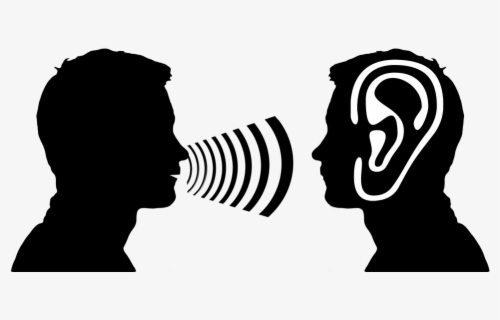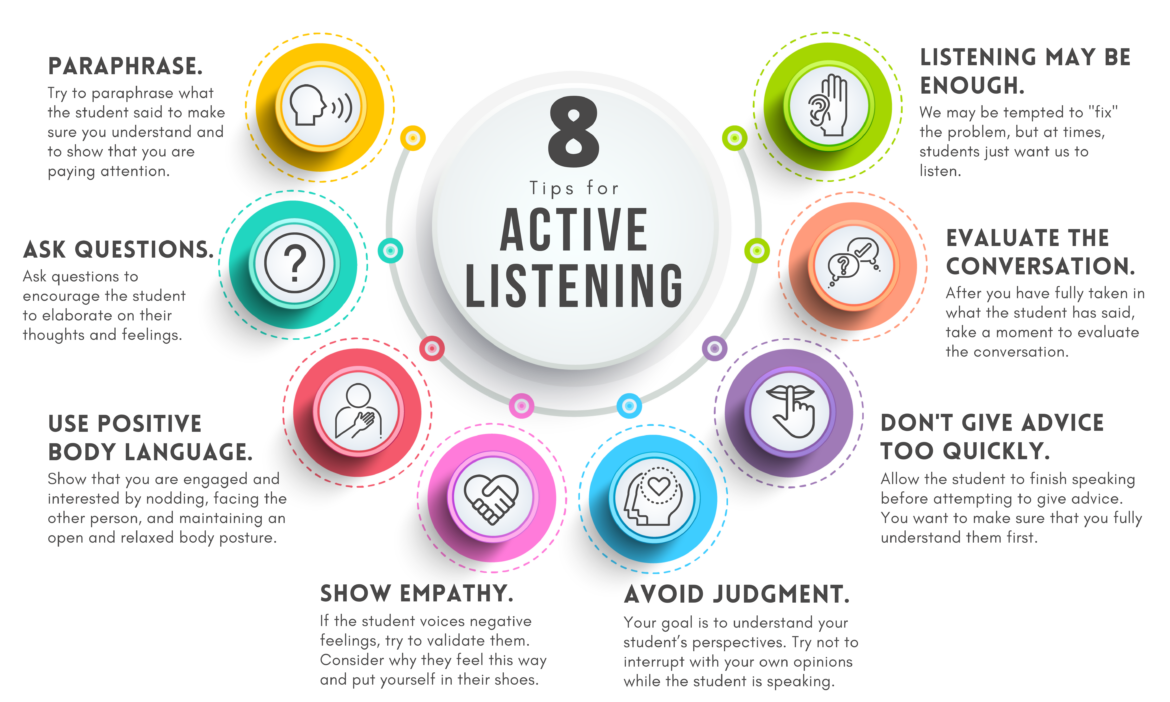Active listening skills are necessary for developing an empathetic classroom. As mentioned in the Six Strategies for Building Empathy in the Classroom, we must make our students feel heard and express an active interest in what they are saying and feeling. As teachers, we do a lot of talking, but we must also invest time in listening. It is imperative to the health of our classroom community that we have excellent active listening skills. So let’s take a look at some information on active listening and go over some tips for practicing it in the classroom.
What Is Active Listening?
Active listening means, as its name suggests, actively listening. When actively listening, you are fully concentrating on what is being said and not thinking about what you will say next. It means listening with a genuine desire to understand the speaker’s feelings and perspective without placing judgment. In addition, active listening involves listening with all your senses. Interest can be conveyed to the speaker by using both verbal and nonverbal cues, like nodding your head or agreeing by saying “yes” to encourage them to continue speaking. By providing these cues, the person speaking will usually feel more at ease and communicate more easily and openly.
What Are the Benefits of Active Listening?
There are many benefits of active listening, including:
- Better teacher-student relationships
- Reduced tension and hostility in the classroom
- Improved communication and trust among students and teachers
- Positive classroom atmosphere and safe environment
In this article by the Harvard Graduate School of Education, active listening is also described as a sign of respect for what students bring to the table. It can be a way of showing them what they are capable of and modeling the importance of listening to each other. Waterford.org presents the benefits of active listening in the areas of communication skills, social-emotional development, and student confidence. Students are better able to communicate ideas and feelings since they have heard others do so. Those who develop active listening skills are less likely to feel frustrated and more likely to feel prepared and confident in their abilities. And active listening promotes mindful thinking, which can reduce anxiety and depression.
Tips for Active Listening

If you can, find a quiet place where you can talk with a student without interruption or distraction. Ask the student to share what’s on their mind. As they do so, try to incorporate the tips below.
Paraphrase
Once the student has finished expressing a thought, paraphrase what they said to make sure you understand and to show that you are paying attention. Things you can say are “What I hear you saying is…,” “It sounds like…,” or “If I understand you right….”
Ask questions
When appropriate, ask questions to encourage the student to elaborate on their thoughts and feelings. Try to avoid jumping to conclusions about what is being said. Instead, ask questions such as, “When you say_____, do you mean_____?” to clarify their meaning.
Use body language
As the listener, show that you are engaged and interested by nodding, facing the other person, and maintaining an open and relaxed body posture. Try to avoid attending to distractions in your environment or checking your phone. In addition, be mindful of your facial expressions. Avoid expressions that might convey disapproval.
Show empathy
If the student voices negative feelings, try to validate them rather than question them. Try to consider why they feel this way and put yourself in their shoes. You could say, “I can understand how that situation could cause frustration.”
Avoid judgement
Your goal is to understand your student’s perspective. Try not to interrupt with your own opinions while the student is speaking. Getting emotionally involved, angry, or upset is something you don’t want to do. You are a role model, and students are looking up to you.
Avoid giving advice too quickly
Allow the student to finish speaking before attempting to give advice. You want to make sure that you fully understand them first. Moving too quickly into advice-giving can be counterproductive.
Evaluate
After you have fully interpreted what the student has said, take a moment to evaluate the conversation.
Know that just listening is sometimes enough
Sometimes our students just want someone to listen to them. As teachers, we tend to want to “fix” our students’ problems for them. But if our minds are busy coming up with solutions for them, we fail to truly listen.
Active listening takes thought, practice, and a desire to put your student’s feelings above your own. Using active listening skills can make a meaningful difference in a student’s life. To learn more ways to practice empathy, as well as get tips, tools, and ideas for integrating it into your classroom, join us for our upcoming Lunch and Learn on November 3, 2021. The webinar is free to all members and will be recorded if you can’t attend the live event. In addition, don’t forget about our self-paced Social-Emotional Learning online course. This $29 course offers more ways to build upon social and emotional practices in your classroom and comes with a free TCEA membership!



1 comment
its true statement and i like it to learn for promoting my daily leasson activies